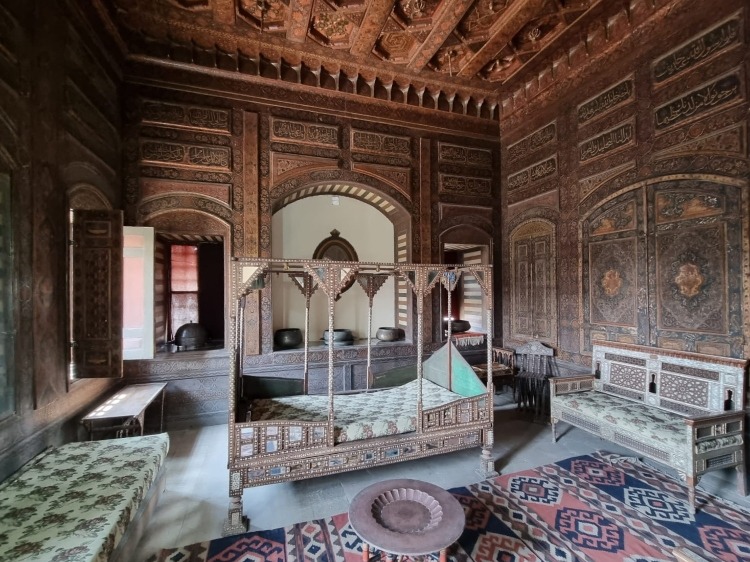Egypt, a historical gem, goes beyond the pyramids. Between its 4000-year-old civilization and its modern-day existence there lays a rich, intricate web of people, culture and events known to many as the country’s Islamic history.
Prominent mosques like that of Sultan Hassan and Ibn Tulun give us a glimpse into the rich exterior architecture of the Abbasid and Mamluk periods. While museums like the Museum of Islamic Art give visitors a look at artifacts from all over the Islamic world. Yet, there is one aspect of that time that deserves more exploration: its domestic life.
That is where the Gayer Anderson Museum comes in. Consisting of two houses, one built in the 17th Century and given the name Bayt al-Kiritliya, the other built in the 16th Century, they are one of the few remaining private houses from the Ottoman Empire. The Scoop team decided to give them a visit to learn more about that untapped aspect of Islamic history.
The Story Behind Its Name
Since their construction, the two houses were resided by many families until 1935, when a man by the name of Gayer Anderson, an English officer who was deployed to Egypt in 1907, made a request to the Assembly of Preserving Arab Antiquities to reside in these two houses and fill them with his collections of world antiques.
Since then, he did just that until 1942 when he left Egypt due to illness. His house became owned by the Assembly of Preserving Arab Antiquities who converted it to a museum. Today, there are rooms dedicated to each country that made it to his collection like the “Indian Room” or the “Turkish Room.” Despite the unique items he was able to procure which ranged from Farsi carpets to Ancient Egyptian canopic jars, throughout my visit, they felt out of place. These artefacts clashed rather than blended with the Ottoman house, which had an identity and history of its own, deserving it own place.
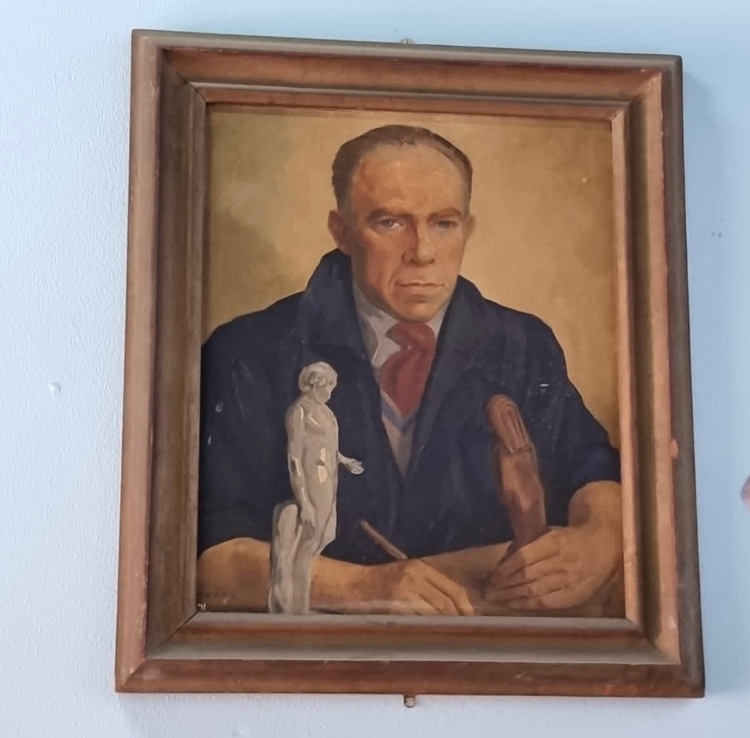
It is also important to bear in mind that as many of these artefacts were collected during a time referred to as the colonial period, it can be labelled as theft. Yet, it is never blatantly stated in such a way because as mentioned by the museum’s guide, Wael El Wesemy, Gayer Anderson bought most of these artefacts from auctions, so the link to them being stolen can be slightly murky.
To me, the true artefacts of the Gayer Anderson Museum museum lie within the 16th and 17th Century elements of the house itself and not its actual displayed artefacts. With the help of El Wesemy, I was able to uncover the houses’ past as well as traces of daily life during the historic Ottoman period.
Dine & Drink
Standing within a courtyard basked in sunlight, with a white marble fountain at its center, was an arched opening with a wooden plaque that read “Visit Route.” El Wesemy stood by that entrance, informing me that it leads to what used to be the kitchen of the Kritalya house.

He then turned my attention towards a large brown box with two curved openings, hanging above the entrance. It turns out this brown box was used to transport food, sort of like a dumbwaiter or the wicker basket Egyptians use to this day to pull up food to their balconies.
Except that was not the most interesting part. Next to it, was a gong like contraption that El Wesemy slammed with his hand. When hit, it made a hollow, dull sound that was loud enough to be heard from the roof. El Wesemy told me how the gong would alert the residents of the house that the food is ready before it is transported up using the brown box.
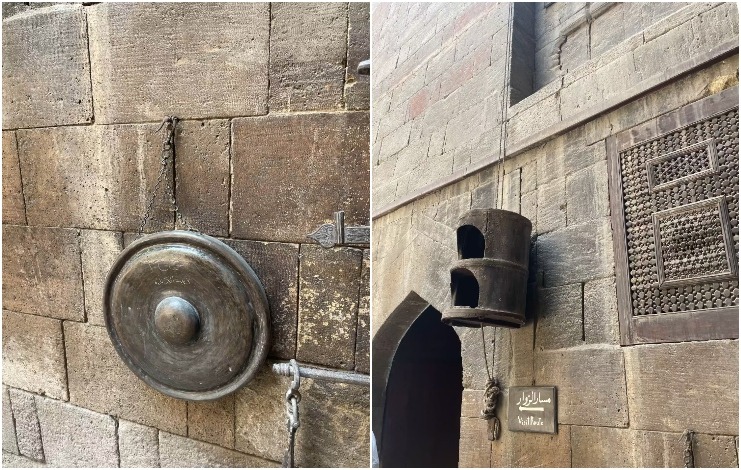
Heading up to the first floor, we entered into a room called “El Sabil Room.” Wedged in the center of the room is the Sabil, a nine-meter-deep well. It is a rarity to find a sabil within a house. Usually, during the Ottoman period, they would be held in a separate building from a mosque and would be used to offer free water to any passerby. Yet, in the Gayer Anderson Museum, it was for both the residents of the household but also any individuals passing by the house. These passersby would be given the water inside a very heavy copper jug through a grilled wooden window.
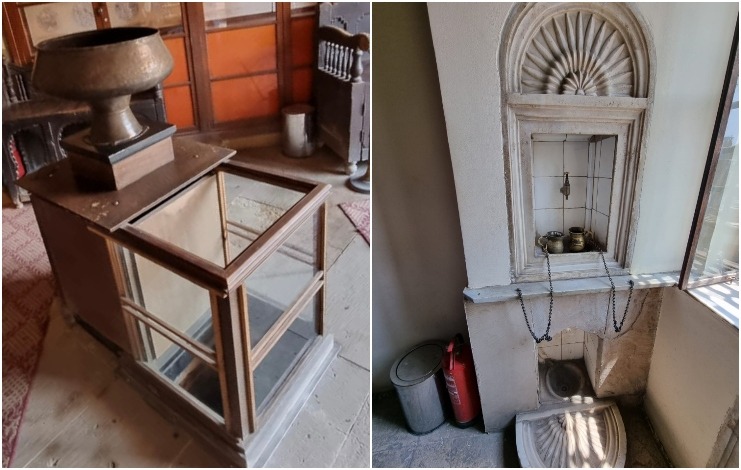
A man called a Muzamilaty would access the Sabil room through a special door, and fill the well. It would be the entire house’s source of water akin to our current modern plumbing system. Approaching the well, I was curious as to how deep it went. Looking down through its opening, I noticed my reflection staring back at me. Turns out there are still traces of water remaining from that time. The depth of the well can even be heard. El Wesemy clapped his hands and a thunderous echo clapped back.
Division of the Sexes
A very common aspect of life during that time was the innate separation of men and women. Men resided in one section of the two houses while women in another. For example, only men had access to two rooms referred to as the Winter and Summer rooms while women had a section of the house devoted to them called “Al Harim”, meaning the women’s room.
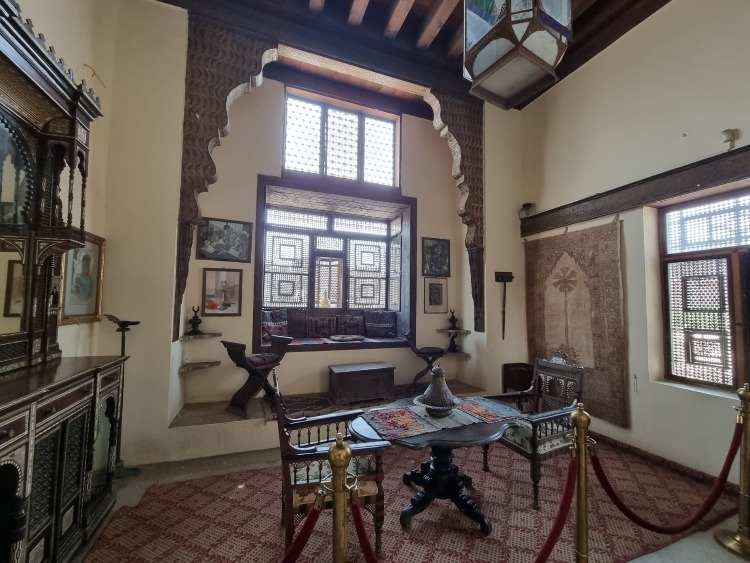
One thing that differentiates the Harim section from that of the male section is a hidden room. Women would access that room through a wooden cupboard disguised as a door. They would use it to hide during an attack. What is more interesting is that the narrow tiny hidden room overlooks the men’s celebration hall through a set of latticed wooden windows known as mashrabiya. Some women would sing for the men from that room, their faces concealed because of the latticed windows.

The separation of the sexes wasn’t just through physical spaces. It was also expressed in more hilarious minute ways. Before entering one of the rooms, El Wesemy stood before its door to show me its door knockers. They looked like ordinary knockers to me yet that wasn’t the case. It turns out that even their door knockers were gendered, one for men and one for women. The sound of the male door knocker was heavy and blunt while for the women, it was higher pitched and more delicate. Even the design of the two knockers supposedly gave off masculine versus feminine vibes with a lion head and thicker knocker was to be used by the men while a thinner, more delicate latticed knocker was to be used by the women.

Superstitions
Superstitions are rooted in Islamic history and so played a big role in the lives of the previous residents of the Gayer Anderson museum. To wrap up the visit, El Wesemy and I left Bayt al-Kiritliya and headed to the second house. Within it, there is a room called “Museum of the House.” It houses several antiques including replicas of Pharaonic busts like that of Nefertiti.
Yet, what is special is that laying behind a display case in that same room are several copper pans. El Wesemy told me how in Arabic they are called Tasat El Khada meaning shock pans. The residents of the house would fill them with water and seven dates and leave them overnight on the roof. Then they would spill the water on the face of the person they believe is cursed. The resulting shock supposedly cures the curse.
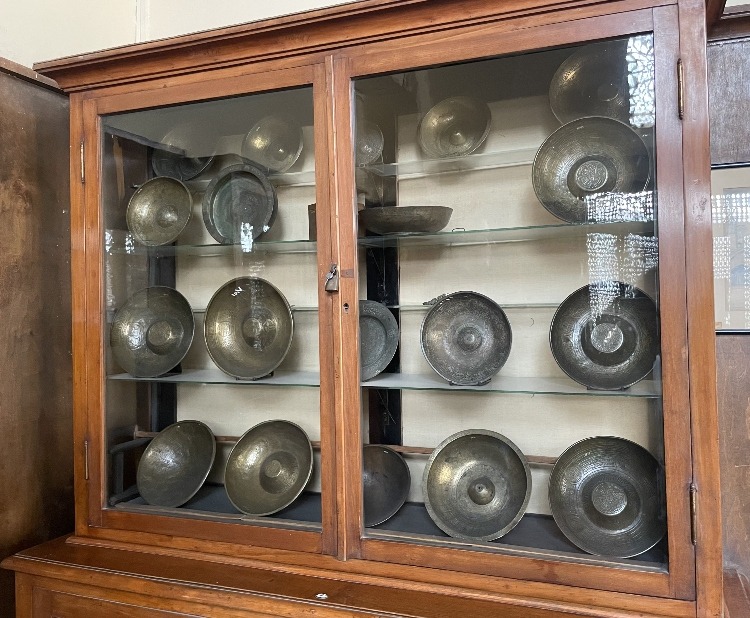
By shifting one’s focus from the collected artifacts to the house itself, the museum began to make more sense and give a better holistic overall identity of a time period that was explored through several different lenses. It is refreshing to get to see it through a less traversed lens, that of the private life within the walls of a home.
There are a few more houses of such a nature in Egypt including Beit El Suhaimi in El Moez street, which also depicts a house built during the 17th Century. Visiting any of these houses can be a great way to get a better grasp and appreciation of that time period.
WE SAID THIS: Don’t Forget… A Visit To One Of The Greatest Museums Of The World: The Islamic Art Museum


